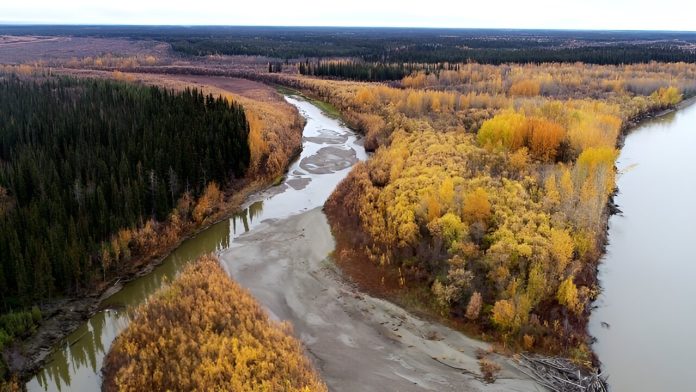
As the Arctic warms at a rate up to four times faster than the rest of the world, a hidden danger is emerging from the frozen ground.
Beneath the permafrost that has been locked away for thousands of years lies a toxic threat: mercury.
As the permafrost melts, this mercury is being released into the environment, posing serious risks to the millions of people living in the Arctic region.
A new study by researchers at the USC Dornsife College of Letters, Arts, and Sciences, published in the journal Environmental Research Letters, has developed a more accurate method for measuring the amount of mercury being released from melting permafrost.
The study estimates that the levels of mercury in the Arctic could be far higher than previously thought, leading to what some scientists are calling a “mercury bomb.”
Mercury is a highly toxic metal that can have severe effects on both the environment and human health. In the Arctic, it has accumulated over millennia, as natural atmospheric circulation patterns have carried mercury from other parts of the world to the high latitudes.
Plants in the Arctic absorb mercury, and when they die, their remains become part of the soil, which eventually freezes into permafrost.
Over time, mercury builds up in this frozen soil, only to be released as the permafrost thaws due to rising temperatures.
The study, led by USC Dornsife professor Josh West and including collaborators from Caltech, MIT, and other institutions, focused on the Yukon River Basin in Alaska.
The team studied the area around two northern villages, Beaver and Huslia, where the Yukon River flows, eroding the permafrost along its banks and carrying mercury-laden sediments downstream.
Previous methods for estimating mercury levels relied on core samples taken from the top few meters of permafrost, but these methods were limited in depth and varied widely in their results. To gain a more accurate picture, the researchers analyzed mercury in sediments found in riverbanks and sandbars, tapping into deeper layers of soil.
Their findings confirmed that these sediment samples provided a reliable measure of mercury content, and the levels they found were consistent with the higher estimates from earlier studies.
The team also used satellite data to monitor how the Yukon River is changing course over time. As the river shifts, it affects how much mercury is eroded from the riverbanks and deposited along sandbars.
The researchers discovered that finer-grained sediments contained more mercury than coarser grains, suggesting that certain soil types may pose greater risks.
While the mercury released from melting permafrost may not pose an immediate toxic threat, its effects could build over time.
Mercury accumulates in the food chain, particularly in fish and game that are essential to the diets of Arctic communities. Although the risk of mercury contamination through drinking water is low, the long-term exposure through diet could have devastating consequences for those living in the Arctic.
The researchers emphasize that while rivers like the Yukon erode mercury-laden sediments, they also re-deposit some of these sediments along their banks, complicating the picture. To fully understand the threat posed by the mercury bomb, scientists need to study both the erosion and reburial processes.
The study’s authors hope that their new methods will lead to a more precise assessment of the mercury levels in the Arctic, providing the information needed to address this growing environmental challenge.
The long-term effects of mercury exposure could be severe, particularly for Arctic communities that rely on hunting and fishing for their livelihoods. If left unchecked, the release of mercury from melting permafrost could have far-reaching impacts on both the environment and human health.



